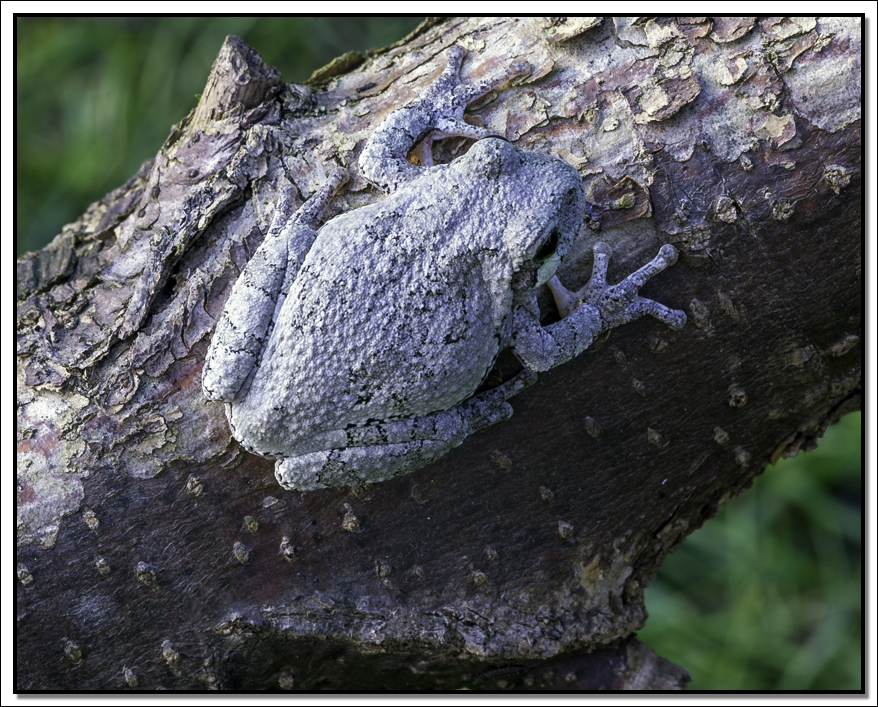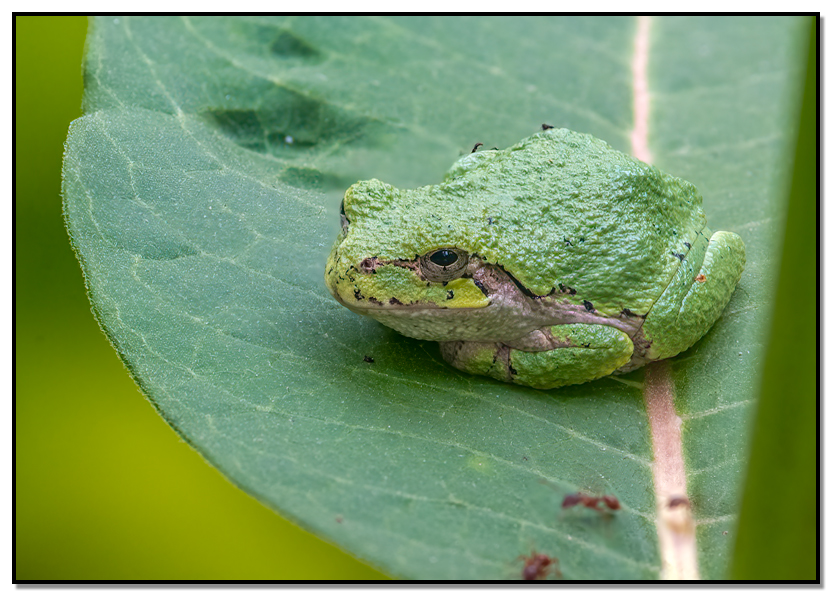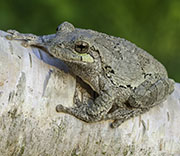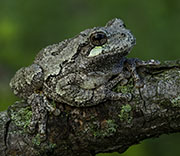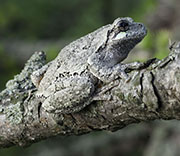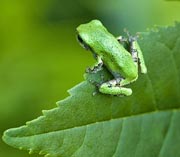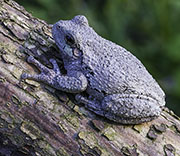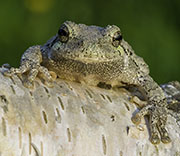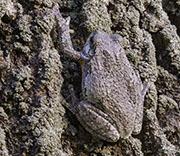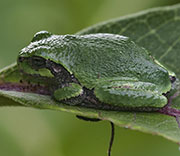
Grey Treefrog (Hyla versicolor)
Gray Treefrog are seldom seen. This is due to a couple of reasons: - they live most of their lives high in the tree canopy; they are primarily nocturnal; they can change their colours to match their surroundings, like chameleons; and, their skin is very warty to help blend in with tree bark.
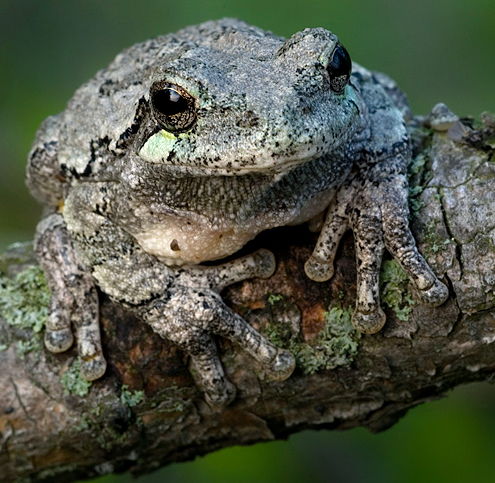 Grey Treefrogs are a medium size frog with big round toes that act like suction cups for easy scaling up trees and other verticle objects. They occasionally hang out around light sources at night to feed on the insects that are attracted to the lights. Their main foods are beetles, moths, caterpillars, flies, ants, spiders and leafhoppers.
Grey Treefrogs are a medium size frog with big round toes that act like suction cups for easy scaling up trees and other verticle objects. They occasionally hang out around light sources at night to feed on the insects that are attracted to the lights. Their main foods are beetles, moths, caterpillars, flies, ants, spiders and leafhoppers.
In less than half an hour, by expanding and contracting three different layers of pigment cells beneath their transparent skin, they can change from bright green to brown and varying shades of grey to match their surroundings. In cool days and cold environments, they can change to almost black to help absorb heat better.
Gray treefrogs breed in late spring and early summer. The males call are loud deep flutey trills as they inflate their throats like balloons. During the day, these frogs remain in trees around the breeding pond. In the evening, males call from trees and shrubs but enter the pond after finding a mate. Even after mating, the male will hang around and keep calling in hopes to attract with late arriving females. When the mating season is over, the return to the treetops, occasionally singing later in the summer on humid or warm rainy evenings.
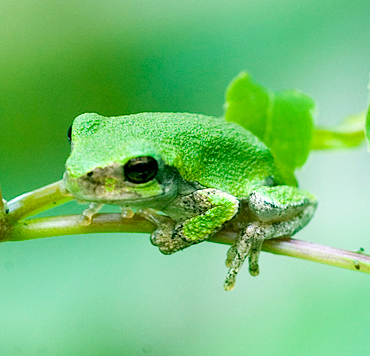 The females lay eggs in small clusters, which are attached to vegetation. The eggs hatch within five to seven days, and the tadpoles metamorphose between 40 and 60 days after hatching.
The females lay eggs in small clusters, which are attached to vegetation. The eggs hatch within five to seven days, and the tadpoles metamorphose between 40 and 60 days after hatching.
In the autumn when weather gets cold, treefrogs come down from the trees and overwinter in leaf litter, under rocks or in abandoned burrows of small animals. Like some other frogs who hibernate on land, it is freeze tolerant. The females lay eggs in small clusters, which are attached to vegetation. The eggs hatch within five to seven days, and the tadpoles metamorphose between 40 and 60 days after hatching.
Newly transformed little froglets initially hang out in the lower shrubbery and among the cattails in late August and early September before moving up the trees . They have smooth, bright green skin at first that becomes rough and bumpy as they mature.
When the autumn when weather gets cold, Treefrogs come down from the trees and overwinter in leaf litter, under rocks or in abandoned burrows of small animals. Like some other frogs who hibernat on land, it is freeze tolerant.
